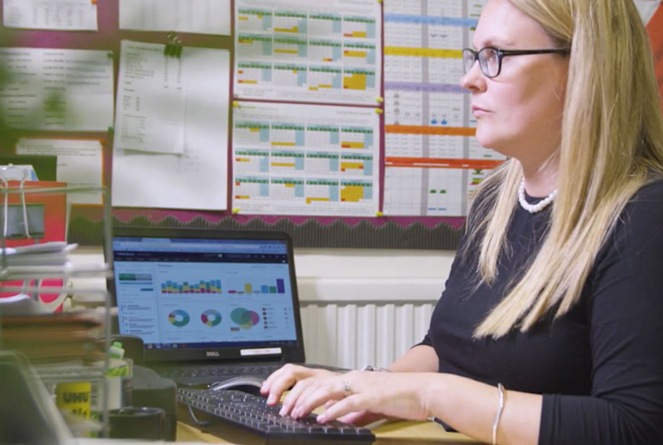Introduction
Your school website is a window to your world. It’s where you showcase your best features, your pupils’ academic success, your facilities, and what makes your school unique. Your website is also key to engaging parents and your wider school community, as well as building your reputation and attracting great students and families.
To redesign or not to redesign – that is the question. If it’s been a while since your last revamp, your school website may not be maximising its potential or incorporating the latest technological advancements.
On average, our customers opt for a school website redesign every 3-4 years. If you’re eager to see your school website achieve more, it’s time to consider a refresh.
Here are a few reasons to redesign your website:
It doesn’t look modern
Redesign your website for a modern, visually appealing look that resonates with contemporary design trends.
It’s not responsive
Ensure your website is responsive, adapting seamlessly to various devices for an enhanced user experience.
The content is outdated
Update your website's content to keep it current, informative, and engaging for your audience.
It doesn’t align with your school’s brand identity
Align your website's design with your school's brand identity for a cohesive and professional online presence.
It loads slowly
Optimise website speed to prevent slow loading times and retain visitor engagement.
It doesn’t integrate with other tools you use
Integrate your website with essential tools for enhanced functionality and seamless user interaction.
It isn’t optimised for search engines
Optimise your website for search engines to improve visibility and reach a wider audience online.
It doesn’t comply with accessibility standards
Redesign your website to comply with accessibility standards, making it inclusive and user-friendly for all.
It’s not secure
Enhance website security to protect sensitive data and ensure a safe browsing experience for your audience.
What Does a School Website Redesign Involve?
To give your website a fresh start, leverage the knowledge you've gained over the years about what works and what doesn't for your school. Here, we have outlined the steps we take when working with a school on a website redesign:
Assessment and Analysis: Conduct a comprehensive evaluation of the current website's performance, user experience, content relevance, and design elements. Identify strengths, weaknesses, and areas for improvement.
Strategic Planning: Define the website's goals, target audience, desired user experience, and overall design direction. Develop a strategic roadmap that aligns with the school's objectives and marketing initiatives.
Design and Development: Collaborate with the school to create a visually appealing and user-friendly interface. Implement modern design trends, intuitive navigation, and optimised layouts.
Content Optimisation and Migration: Review and revise existing content to ensure accuracy, relevance, and alignment with the school's messaging. Streamline the sitemap, categorise content effectively, and plan for smooth content migration to the redesigned website.
Testing and Launch: Conduct thorough testing of the redesigned website to identify and address any bugs, glitches, or usability issues. Once all aspects meet quality standards, plan a seamless transition from the old website to the new one, ensuring a successful launch and positive user experience.
The upgraded website uses a user-friendly content management system (CMS) for easy updates and flexible editing. Juniper can assist with transferring content, saving schools valuable time.
Key Considerations for Your Website Design
Every school or trust is different, but there are a few things that you will need to consider when thinking about a school website redesign:
User Experience (UX): Prioritise creating an intuitive and user-friendly interface to enhance the overall experience for visitors. Easy navigation, clear information architecture, and quick access to essential sections are crucial.
Mobile Responsiveness: Design the website to be accessible and functional across various devices, including smartphones, tablets, and desktops. Ensure content and features are optimised for different screen sizes and resolutions.
Branding and Visual Identity: Ensure that the website's design aligns with the school's branding guidelines and visual identity. Consistent use of colours, fonts, logos, and other design elements helps reinforce the school's image and message.
Integration and Functionality: Integrate necessary third-party tools, systems, and platforms seamlessly. Consider incorporating engagement tools such as event calendars, newsletters, online forms, social media feeds, and other interactive elements that enhance the user experience.
SEO and Accessibility: Implement best practices for search engine optimisation (SEO) to improve the website's visibility in search results. Additionally, ensure the website adheres to web accessibility standards, making it usable for individuals with disabilities.
Security and Data Privacy: Prioritise the security of user data by implementing robust security measures. Comply with data privacy regulations and clearly communicate your school's privacy policies to visitors.
Collaboration and Involvement: Involve key stakeholders such as school administrators, teachers and parents in the design process. Gather their insights, feedback, and preferences to ensure the website meets the diverse needs of the school community.
Compliance and Legal Considerations: Adhere to legal requirements, copyright laws, licensing agreements, and educational regulations while developing the website. All school websites must comply with the DfE guidelines, and failure to do so can negatively impact your Ofsted rating. Download our free DfE website checklist to make sure your website is fully compliant.
How to Get Started with Your Website Redesign
If the above indicators suggest your school website might be due for a refresh, your first step should be a review. Speak to an expert – our team has built over 7,500 school and trust websites over the last 20 years and can help you identify what your website needs to stand out and make an impact.
To kick things off, book a free consultation with a school website expert.


/Primary%20school%20.jpg?width=2000&name=Primary%20school%20.jpg)








.png?width=940&height=788&name=Lingfield%20College%20Case%20Study%20(5).png)
-1.png?width=1000&height=833&name=National%20Association%20of%20Head%20Teachers%20(3)-1.png)
-3.png?width=1080&height=1080&name=Untitled%20design%20(10)-3.png)






